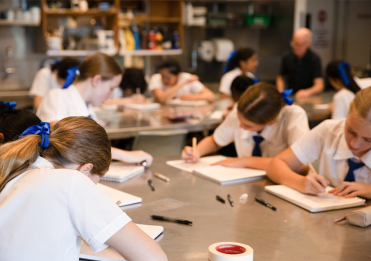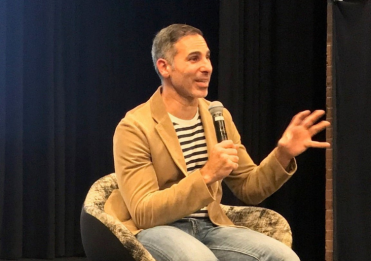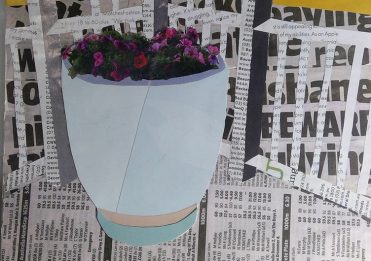Year 12 Visual Art Students have developed deeply personal works showcasing a broad spectrum of media, techniques, ideas and perspectives. The girls began working on their artistic concepts in Term 4 2019, completing a number of theoretical and practical tasks in the lead-up to creating their final piece for the exhibition.
From traditional skills to digital multimedia, painting to three dimensional construction and installation works, the exhibition showcased the breadth and depth of our talented Visual Art students. Examples of the girls work, and their artists’ statements, are below.
A future? Only hanging by on threads by Elizabeth MacPherson (12L)
Acrylic on canvas installation with mixed media
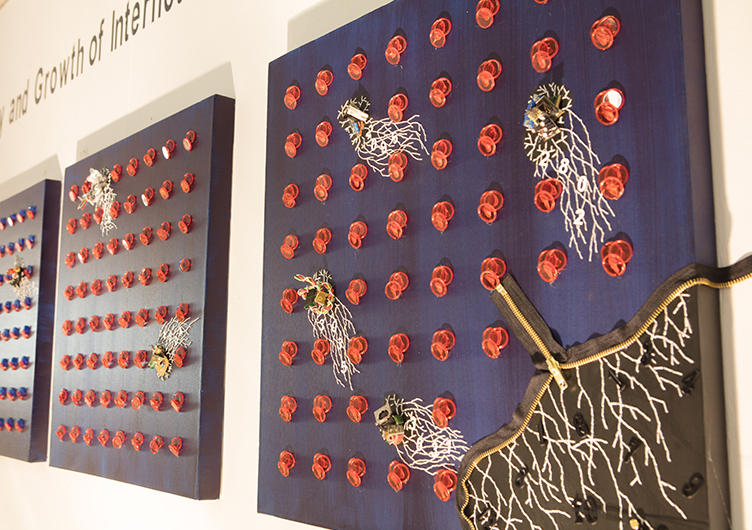
This work responds to the contemporary context of technological advancements, raising questions around the concept of a future where we must reconcile the rapid advancement of technologies with nature. My focus ‘Anatomy of the future’ is conveyed through my installation depicting the History and-Rapid-Growth of-Internet-from 1995-2019. Experimental work comprising three plaster faces questions human anatomy through a transition from human to robot. Simone Eisler’s work responded to themes of hybridity between human and nature through semiotics and visual concepts. Hybridisation is represented in my artwork as statistical networks, where technology is exploited and used as a tool to function and process information. Experimental work and Laurie Frick’s use of physical shape and material depicting collections of data led me to my formal context. Solidity of translucent coloured counters and technological components—increasing by 500 million increments until ‘overflowing’ onto wall, physically emphasises data collected. This formal organisation creates a dialogue for audience to interact and decipher, prompting viewer reaction to the proliferation of technology and impacts on the human species.
Into the void by Fenella Counsell (12L)
Bird cage wire mesh, plaster, acrylic paint, star-pickets, bolts
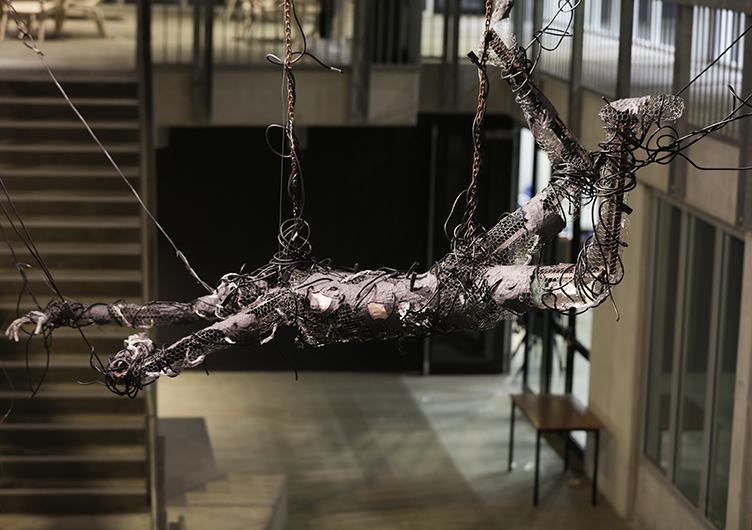
This work responds to the contemporary context and artist’s apprehension of technological advancement, consequential hybridity, future unknowability, and human superiority. Into the Void develops the focus ‘Fantastical Futures’ by depicting a futuristic, parasitic relationship between mankind and technology. The work is inspired by the parasite, which infects and controls insects, adapting it to depict humans as the host in their dependent relationship with technology. Realistic approaches to form and structure induce audience’s genuine fear of the uncanny prospect of a relationship where technology dethrones humans from the food chain. It expands on the notion of ‘seeing is believing’ by revealing the audience’s growing dependence on technology—without it, they would fall. The invasive, parasitic wires challenge audience associations with technology as the key to the future by portraying technology’s unescapable dominance and questionable reversibility. Challenging current audience associations, the work provokes the question: how fantastic are our technology-dependent futures?
Shifting Identity by Georgia De Stefani (12W)
Mixed media
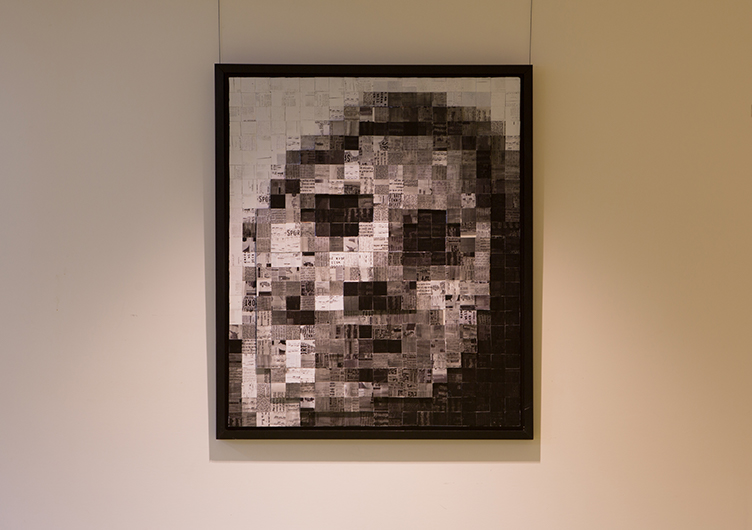
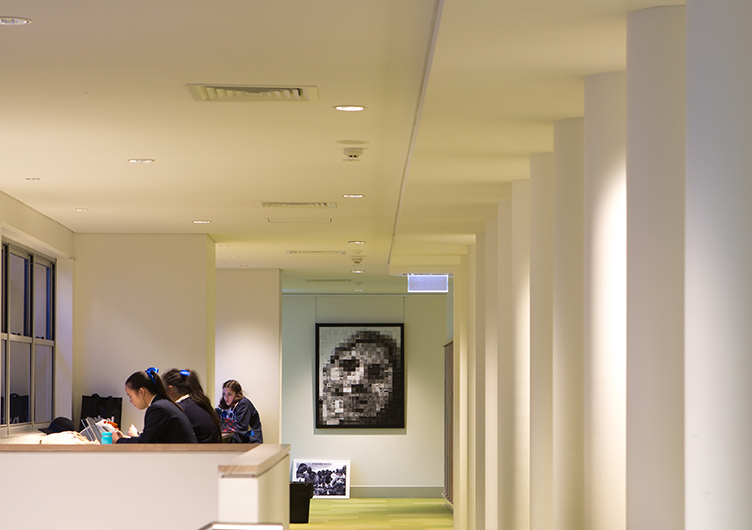
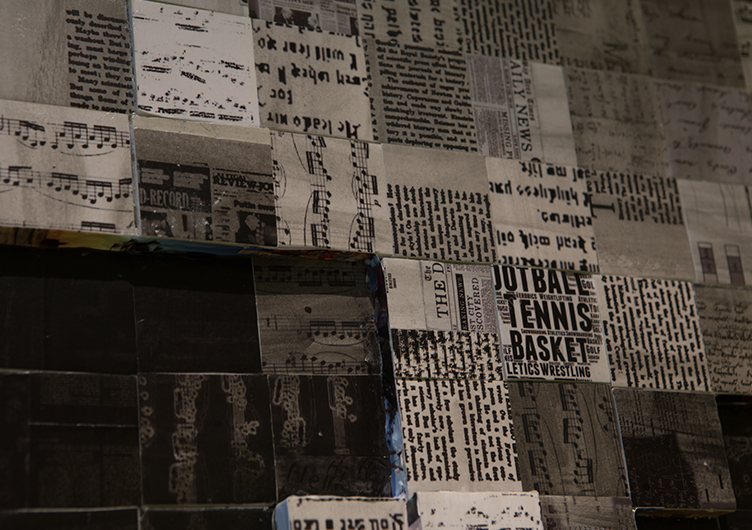
This work explores the personal context of self, represented as a fugitive patchwork of influences from surrounding cultural contexts and representations. Shifting Identity develops the focus ‘Singular Complexities’ by investigating the singular identity we present to ourselves and the outside world. This identity comprises multiple texts and stories exposing how the closer you look, the less coherent one’s identity is. This work references Close’s portrait (Roy 1), which from a distance appears realistic but on close inspection reveals an abstract composition. The squared ‘pixilation’ references the contemporary context of digital media representations of self (social media). The 3D surface of the greyscale text-filled squares represents a landscape of influence inserted with glimpses of coloured experience. The work engages viewers in a physical understanding that a sense of identity which initially appears solid, is, on closer inspection revealed to be unique but shifting combination of stories and cultural influences.
Infinite Possibilities by Nellie Osmani (12M)
Mirror installation with pen drawing
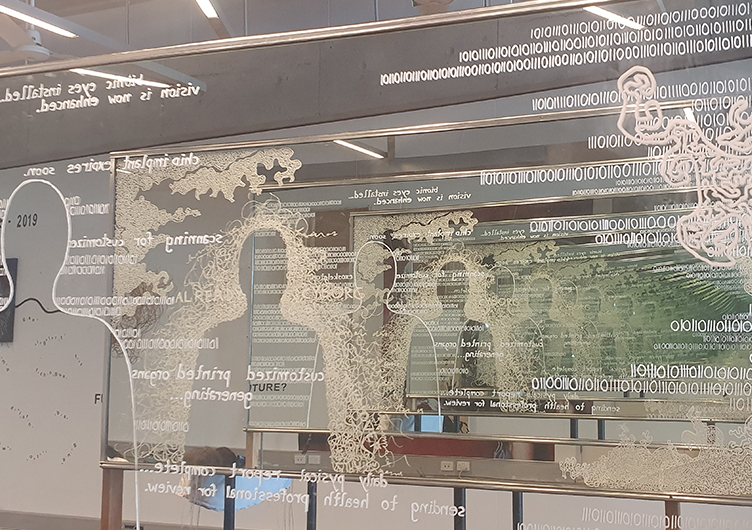
This work is a response to the contemporary context of new and emerging technologies that can be incorporated into the human body. Infinite Possibilities was developed from the focus ‘The Anatomy of the Future’ where numerous sentences and lines, drawn on opposing mirrors, convey the fear, chaos, and development that will emerge as technology progresses and is implemented into the human body. The work invites the viewer to immerse themselves in a futuristic space, using the images of the mirrors reflecting off each other to create a never-ending void and the silhouette of a human created using negative space to stand in front of. Inspired by various artists whose works focus on the layering of abstract lines to create forms, the drawings in this work prompts the viewer to consider different scenarios in which incorporating technology into the body will affect society, whether it be for better or for worse.
A screen shot of Victoria Palka’s (12H) video installation
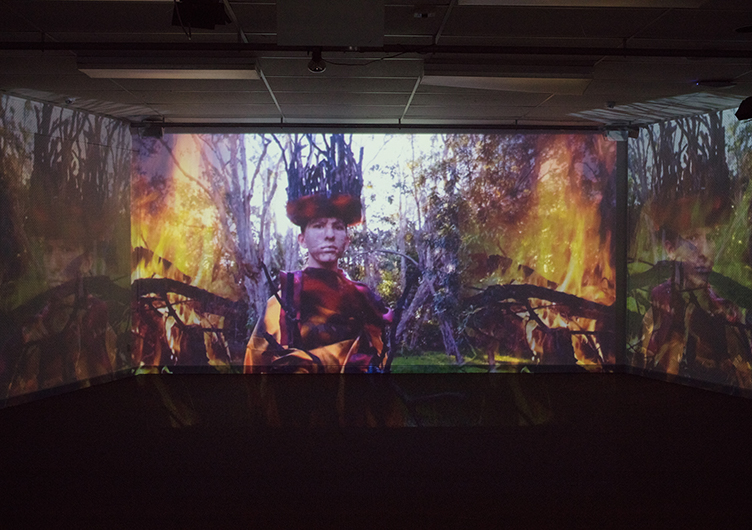
Reflecting on the contemporary context of recent bushfire devastation, this work develops the focus ‘Revival of Balance’, by personifying the dual power of nature for both destruction and rebirth. The personification of the guardian nature spirit was developed from research into Polish mythology and Lisa Rehana’s, Digital Marae, which used contemporary media to revive cultural stories; a figure was used to embody the spirit of nature within the human body. This work inverts this story by showing an angry guardian which destroys, striking back in a way that cleanses and thus revives the balance of land. As an instillation, the space and the scale of the three projections is designed to immerse the viewer in a sense of the power of nature. The added layer of water sounds comments on the healing beyond destruction.


